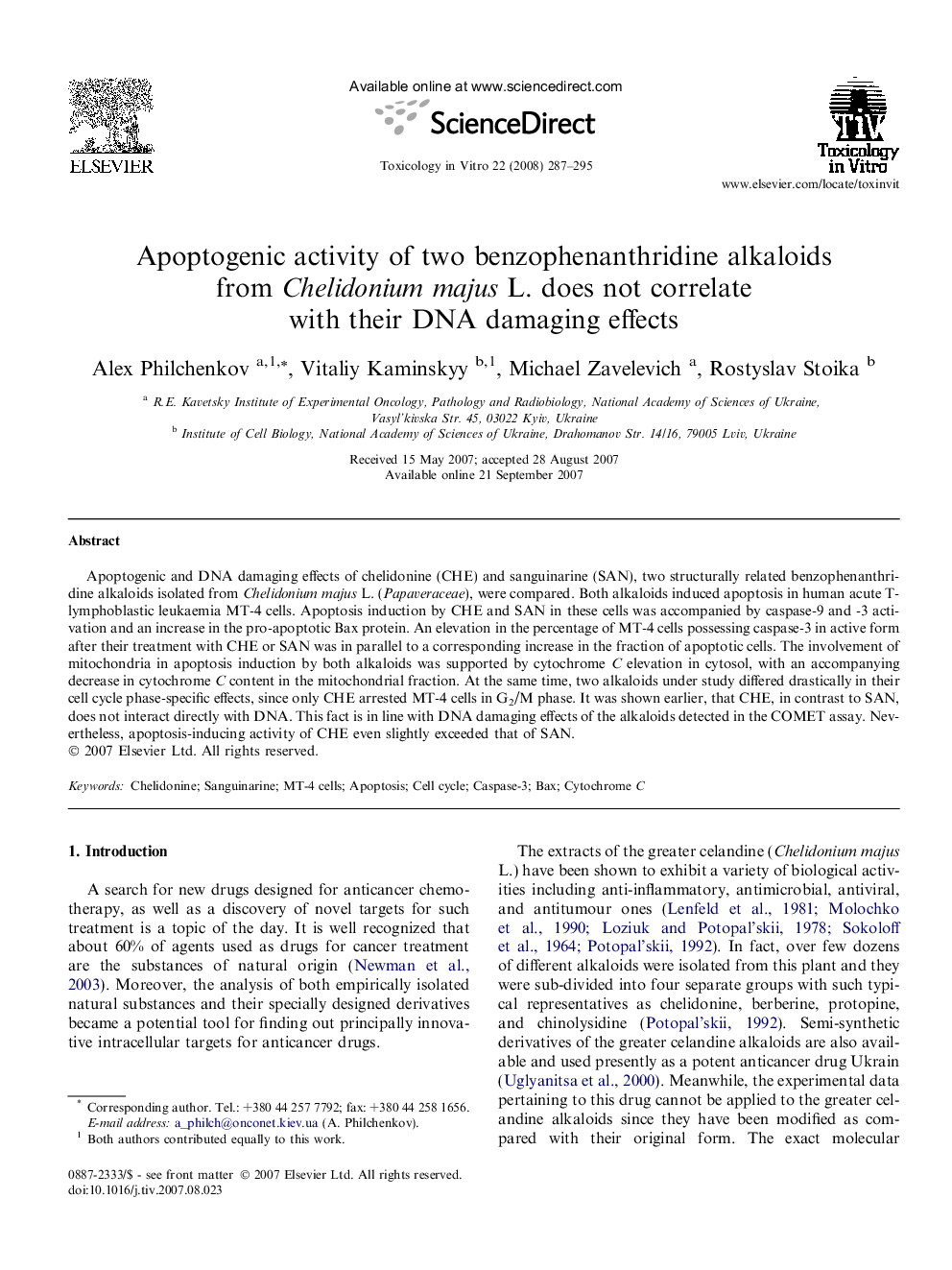| Article ID | Journal | Published Year | Pages | File Type |
|---|---|---|---|---|
| 2603485 | Toxicology in Vitro | 2008 | 9 Pages |
Apoptogenic and DNA damaging effects of chelidonine (CHE) and sanguinarine (SAN), two structurally related benzophenanthridine alkaloids isolated from Chelidonium majus L. (Papaveraceae), were compared. Both alkaloids induced apoptosis in human acute T-lymphoblastic leukaemia MT-4 cells. Apoptosis induction by CHE and SAN in these cells was accompanied by caspase-9 and -3 activation and an increase in the pro-apoptotic Bax protein. An elevation in the percentage of MT-4 cells possessing caspase-3 in active form after their treatment with CHE or SAN was in parallel to a corresponding increase in the fraction of apoptotic cells. The involvement of mitochondria in apoptosis induction by both alkaloids was supported by cytochrome C elevation in cytosol, with an accompanying decrease in cytochrome C content in the mitochondrial fraction. At the same time, two alkaloids under study differed drastically in their cell cycle phase-specific effects, since only CHE arrested MT-4 cells in G2/M phase. It was shown earlier, that CHE, in contrast to SAN, does not interact directly with DNA. This fact is in line with DNA damaging effects of the alkaloids detected in the COMET assay. Nevertheless, apoptosis-inducing activity of CHE even slightly exceeded that of SAN.
